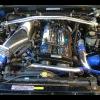Placement Of Afm
Announcements
-
Similar Content
-
Latest Posts
-
Yes, important point. Watch the Motive videos with Herman thickness testing the bores and deck. You do not want to push the unlucky (thin) block as hard as you can push the average block.
-
Make sure to have the block checked for cracking etc before doing anything.
-
Pull it out. Put a suction hose on it drawing from a bucket of petrol. Put a discharge hose on it pointing back into the bucket. Add 12V. That will tell you if it works at all. Then put it back in, turn the engine on, and see if there is 12V on the terminals. That would suggest that it runs when the car does and adds its "capacity" to the total pumping system.
-
So you're telling me this is an external fuel pump? I've had the car for at least 6 years now and it's been there the entire time. I had the car tuned a couple years ago and I had the shop do the fuel system, including a new in-tank Proflow 340 which shit itself about a year later and I replaced it with the same model. I find it odd that they didn't remove this or even make mention of it. I seriously had no idea what it was. How would I test if it's functioning?
-
Don't take it as a guarantee. It's all a game of statistics. And on top of that, smooth over a thick layer of "quality of spanner spinning" as a further Gaussian curve of probability of failure. You play games at anything above ~400 HP, and you're using up margins in terms of engineering and luck.
-






Recommended Posts
Create an account or sign in to comment
You need to be a member in order to leave a comment
Create an account
Sign up for a new account in our community. It's easy!
Register a new accountSign in
Already have an account? Sign in here.
Sign In Now